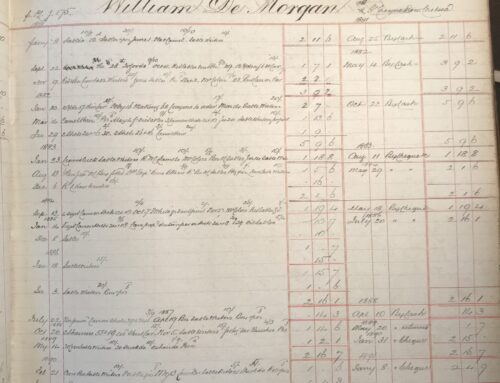
William De Morgan, celebrated as one of the most imaginative ceramicists of the Arts and Crafts Movement, left behind an enduring legacy of innovative tile designs. Among his thousands of designs, his animal tiles were popular with the Victorians, used in nurseries and fireplaces in fashionable homes, and still captivate audiences today. His Copper Lustre Pegasus Tile stands out. A fusion of mythological symbolism, technical mastery, and aesthetic brilliance.
A Mythological Inspiration
The Pegasus, the legendary winged horse from Greek mythology, has long been a symbol of imagination, freedom, and poetic inspiration. De Morgan was fascinated by mythological creatures and often used them as motifs in his designs. His Pegasus Tile captures the majestic spirit of Pegasus, placing the graceful winged horse at the centre of the design.
The Mastery of Copper Lustre
One of the most striking features of the Pegasus Tile is its radiant copper lustre finish, a technique De Morgan revived and perfected during his career. Lustreware, a method dating back to medieval Islamic pottery, involves applying a metallic glaze over the tile’s surface, giving it an iridescent, reflective quality. Achieving this effect was notoriously difficult and required exceptional skill in both chemistry and kiln control.
De Morgan’s use of copper lustre was groundbreaking, as he pushed the boundaries of the technique to achieve a rich, glowing finish that added depth and vibrancy to his tiles. The Pegasus tile shimmers with warm, metallic tones that shift as light moves across the surface, giving the piece an otherworldly quality. This lustrous sheen enhances the mythical essence of the Pegasus, making the tile feel like a relic from a dreamlike, ancient world.
A Legacy of Timeless Beauty
William De Morgan’s tiles, particularly the Copper Lustre Pegasus Tile, continue to be celebrated for their beauty and craftsmanship. Today, collectors and enthusiasts admire his work not only for its artistic value but also for its technical innovation. The Pegasus Tile is more than just a decorative object; it is a symbol of De Morgan’s ability to breathe new life into ancient techniques, creating timeless works that resonate with both history and modernity.
Whether displayed in a historic home or a museum setting, the Pegasus Tile remains a striking reminder of the power of imagination, craftsmanship, and artistic vision. Through his work, William De Morgan immortalised the myth of Pegasus, and created a modern and appealing design.
This beautiful tile has been framed as a panel with some of De Morgan’s other animal tiles and can be visited at the De Morgan Museum at Cannon Hall.







